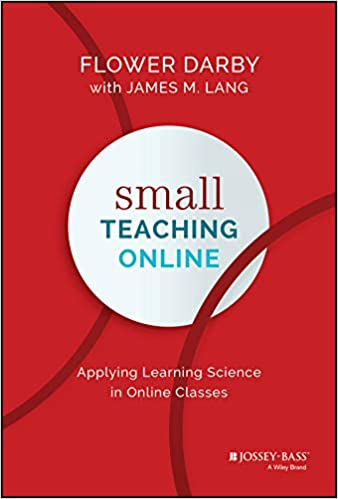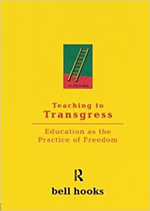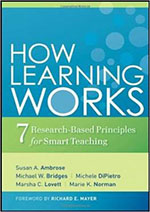In his now-classic book Learner-Centered Teaching, Terry Doyle describes a fundamental shift in faculty’s thinking about course design: instead of focusing so much on the work that we will do (reading, taking notes, lecturing, working problems, doing demonstrations, etc.), he encourages us to focus more on what we will ask students to do because, as he says , “The one who does the work does the learning.”
Now that many of us are teaching remotely and moving some of our students’ first introduction to the content (through readings, videos, short lectures, etc.) to the asynchronous portion of the class, we can spend the synchronous portion (likely on Zoom) providing opportunities for students to get the kinds of practice and feedback they need to make progress in the course. Class time is well spent doing activities that benefit from instructor and peer presence and that help to prepare students to do other coursework on their own, outside of class time.
Often, when this way—a learning-centered way—of thinking about teaching is unfamiliar, it can be hard for faculty to imagine what teaching with activities might look like in their particular course. Providing students with an opportunity for practice and feedback is fundamentally different than telling them how to do work well, or showing them how to do work well, so let’s look at an example:
Professors A, B, and C teach different courses, but they’re each concerned that their students’ writing often has errors and can be unclear. They each want their students to become more effective proofreaders and editors, but they take different approaches to helping students achieve that goal:
Professor A reminds his students to proofread and edit their work. He says he will be looking for evidence of effective proofreading when he grades their next paper, so they should find methods that work well for them. He suggests using spellcheck, printing their work and reading it with a pen in hand, and looking up grammar and style questions on the Purdue OWL.
Professor B explains the importance of proofreading and then does a demonstration in which she shares her screen during a Zoom meeting. She shows how she proofreads a piece of her own writing, describing strategies and resources that have worked well for her. Students watch and take notes as Professor B corrects errors, improves clarity, and confirms she has properly cited and documented sources.
Professor C asks students to come to the Zoom meeting prepared with drafts of their own papers. He begins by explaining the importance of proofreading, and he shares several strategies and resources. Then, he leads students through two activities, one in which they use the Purdue OWL to check one another’s citations, and one in which they take turns reading their work aloud to one another, highlighting any errors or unclear spots they find as they read. After the activities, which take place in breakout rooms, Professor C brings the class back together in the main Zoom room so students can discuss their experience using these different strategies and resources. Last, he asks them to share their next steps for proofreading and editing their papers.
All three instructors want to help their students improve. Professor A explains his expectations and shares strategies and resources. He tells students what to do. Professor B models how her students could proofread more effectively by doing it herself. She demonstrates strategies so students can see them in action. She shows students what to do. But only Professor C creates an opportunity for students to do the work themselves in class and to get feedback from peers. It might seem like he is doing the least teaching, but he is just using his expertise differently: He designed and facilitated the activities, and he led a discussion with students afterward to help them make meaning of what they did, to clarify any misconceptions, and to share any additional information. Students developed skills together in class that they could apply outside of class, hopefully turning in more polished papers that will be easier for Professor C to read.
Whether you teach with writing, problem solving, case studies, textual analysis, data analysis, etc., you can also spend face-to-face class time or synchronous remote class time inviting students to do the work that will help them do the learning. You can start by thinking about what your students most need to practice in order to make progress towards the course goals, and then you can consider how your presence and/or their peers’ presence might enhance that practice or help provide feedback. Designing and facilitating activities can be part of teaching in any modality; we just use different tools when we teach this way online.
If you would like support in designing activities that students can do during class time, please get in touch with us at pro-teaching@fsu.edu. We look forward to working with you!
Fall Faculty Reading Groups
This fall, CAT is offering the following fully online faculty reading groups. Each group will meet once a week for three weeks on Zoom to discuss the books in sections. Each book will be available electronically, so it will be possible to participate from anywhere. We hope you can join us! Please register here.
Small Teaching Online: Applying Learning Science in Online Classes
Fridays: 9/18, 9/25, 10/2
10:30 a.m. – 12:00 p.m. on Zoom
 How do I make my online class interesting and interactive? How do I motivate students to keep up with the course, to engage intellectually, and to learn deeply while working remotely? In this update to James Lang’s popular book, Flower Darby applies Lang’s concept of “small teaching” to the online classroom. Faculty from across disciplines and FSU campuses are invited to join this reading and working group, in which we will explore the science of learning and discuss small but strategic changes we can make that will have a powerful influence on our students’ learning.
How do I make my online class interesting and interactive? How do I motivate students to keep up with the course, to engage intellectually, and to learn deeply while working remotely? In this update to James Lang’s popular book, Flower Darby applies Lang’s concept of “small teaching” to the online classroom. Faculty from across disciplines and FSU campuses are invited to join this reading and working group, in which we will explore the science of learning and discuss small but strategic changes we can make that will have a powerful influence on our students’ learning.
Teaching to Transgress
Wednesdays: 9/23, 9/30, 10/7
2:00 – 3:30 p.m. on Zoom
 Hooks challenges the “banking” model of learning, where education is envisioned as an accumulation of received wisdom. She argues that instead, education must be a process of empowerment and liberation, in which students learn to question, to resist, and to find their own place in a larger conversation. She asks us as educators to examine our own assumptions, biases, and privileges, so that we can better reach our students, and offer them a truly transformational education. Participants will develop strategies for putting these ideas into practice.
Hooks challenges the “banking” model of learning, where education is envisioned as an accumulation of received wisdom. She argues that instead, education must be a process of empowerment and liberation, in which students learn to question, to resist, and to find their own place in a larger conversation. She asks us as educators to examine our own assumptions, biases, and privileges, so that we can better reach our students, and offer them a truly transformational education. Participants will develop strategies for putting these ideas into practice.
How Learning Works
Thursdays: 10/8, 10/15, 10/22
2:30 – 4:00 p.m. on Zoom
 This book distills the research on cognition, translating decades of scientific literature into practical advice and introducing seven general principles of how people learn. The authors draw on cognitive, developmental, and social psychology, as well as educational research, anthropology, etc. The discussion spans issues from memory to motivation, integrating theory with real classroom examples. Participants will develop strategies for strengthening their own teaching through the application of these principles, with a focus on applying the strategies in the book to remote teaching and learning.
This book distills the research on cognition, translating decades of scientific literature into practical advice and introducing seven general principles of how people learn. The authors draw on cognitive, developmental, and social psychology, as well as educational research, anthropology, etc. The discussion spans issues from memory to motivation, integrating theory with real classroom examples. Participants will develop strategies for strengthening their own teaching through the application of these principles, with a focus on applying the strategies in the book to remote teaching and learning.



